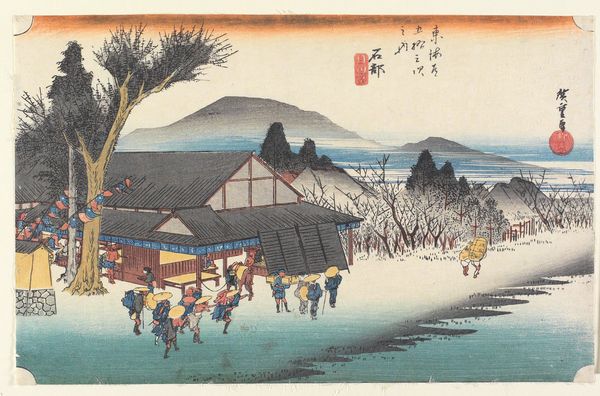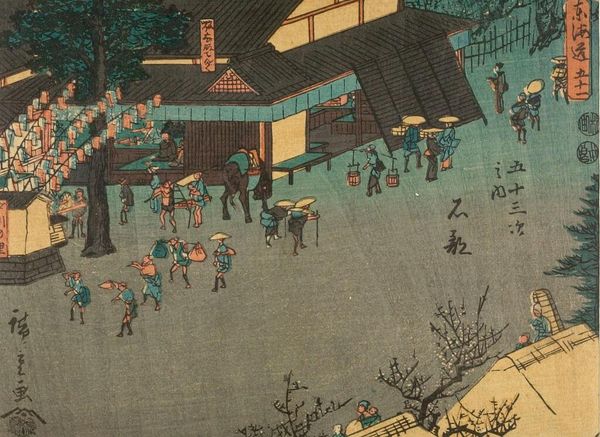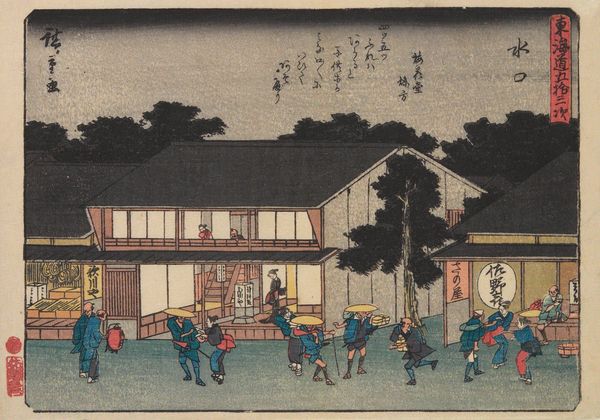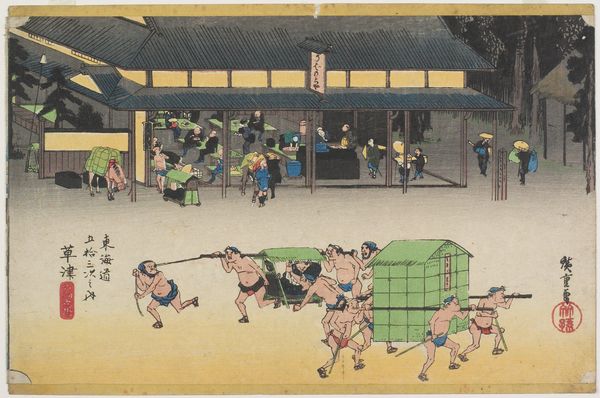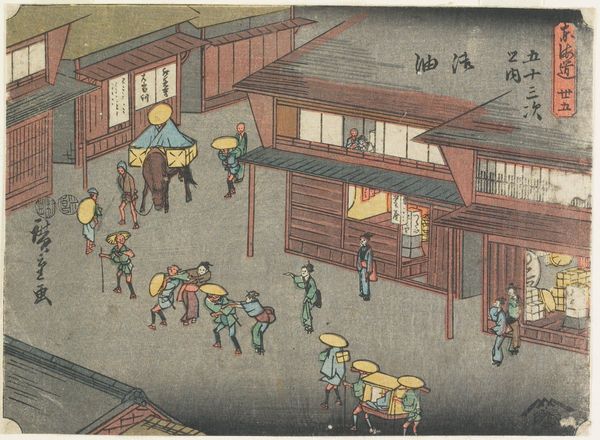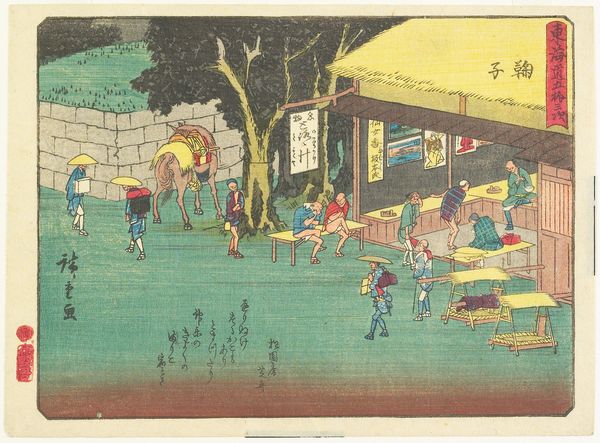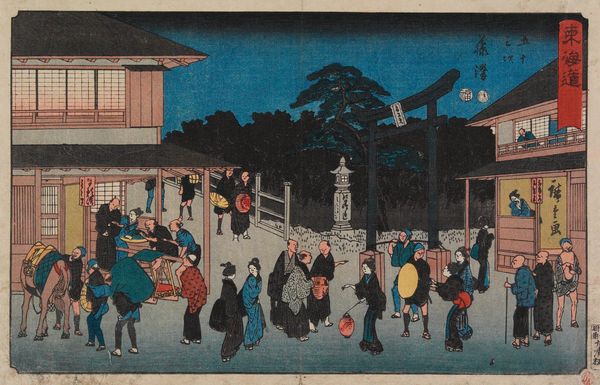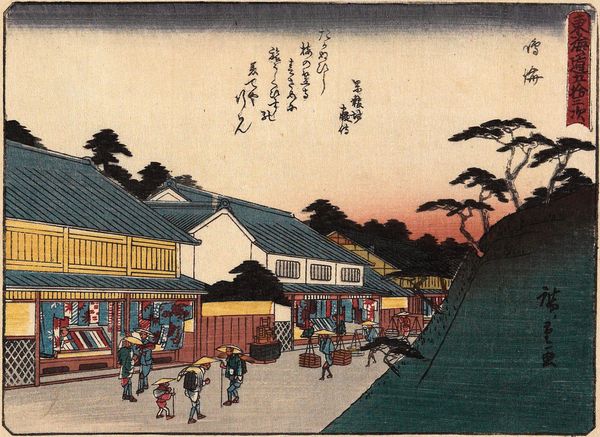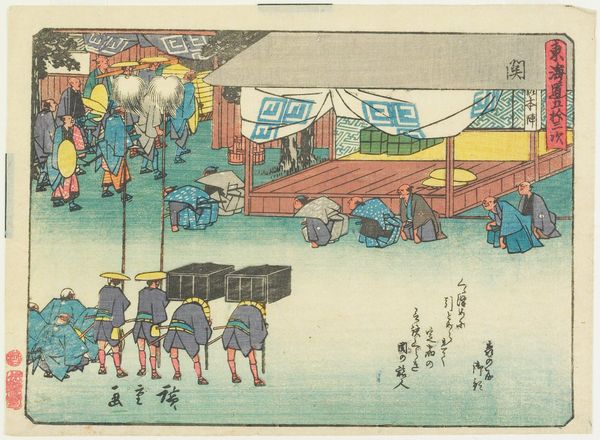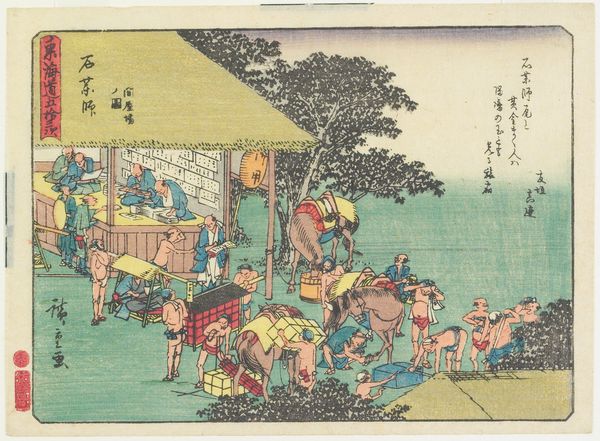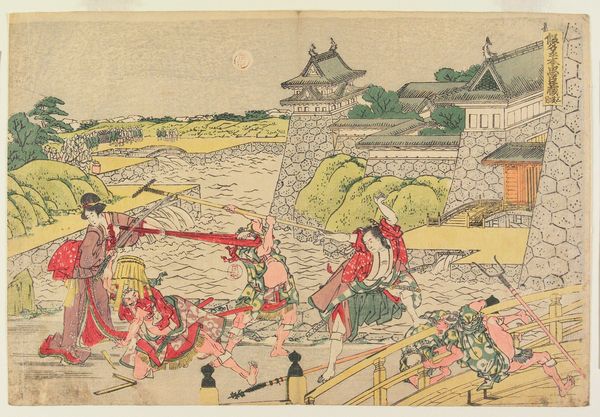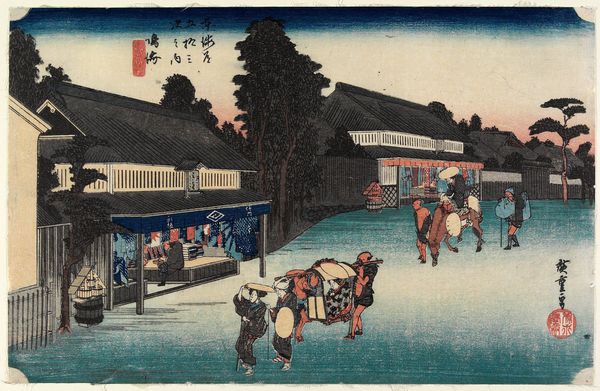
print, ink
# print
#
landscape
#
ukiyo-e
#
japan
#
ink
#
cityscape
Dimensions: 6 7/16 x 8 13/16 in. (16.3 x 22.4 cm) (image)7 1/16 x 9 1/16 in. (18 x 23 cm) (sheet)14 x 17 15/16 in. (35.5 x 45.5 cm) (mat)
Copyright: Public Domain
Editor: We’re looking at Utagawa Hiroshige’s woodblock print, “No. Ishibe,” created between 1847 and 1852. The use of color feels so unique, capturing what appears to be a bustling town with muted, almost dreamlike, qualities. What stands out to you in its composition? Curator: Observe the receding planes; how Hiroshige organizes the image. See how the artist directs our vision from the bottom right foreground to the back using linear perspective. Note also that, counter to Western formal techniques, the artist positions the horizon at roughly eye level. The use of symmetry in the architecture is not absolute. The entire print exhibits a planar flattening due to a high horizon, where the foreground and background appear nearly aligned. How might this impact your perception? Editor: It flattens the scene, making it feel less like a realistic landscape and more like a snapshot of a moment, maybe heightening the sense of artificiality you were mentioning. Curator: Precisely. Note the compositional structure produced by lines; not only are we provided the architectural lines from houses, yet also diagonal lines converging to one spot in the image that organizes movement, leading our eyes to see the interaction between people and their setting, thus reflecting their emotional states. Editor: That’s fascinating. I was so drawn to the dreamy palette. Curator: Consider the formal organization. Color is secondary to line and placement of design, creating visual rhythm through the tonal consistency between objects such as lanterns and building that unify pictorial space and creating a visual harmony. Editor: It makes you consider how important the physical arrangement is rather than just being distracted by the colors. I’ll definitely look at prints differently now. Curator: Hopefully, you begin to see that it’s not what’s depicted, but rather how form produces visual space.
Comments
No comments
Be the first to comment and join the conversation on the ultimate creative platform.
